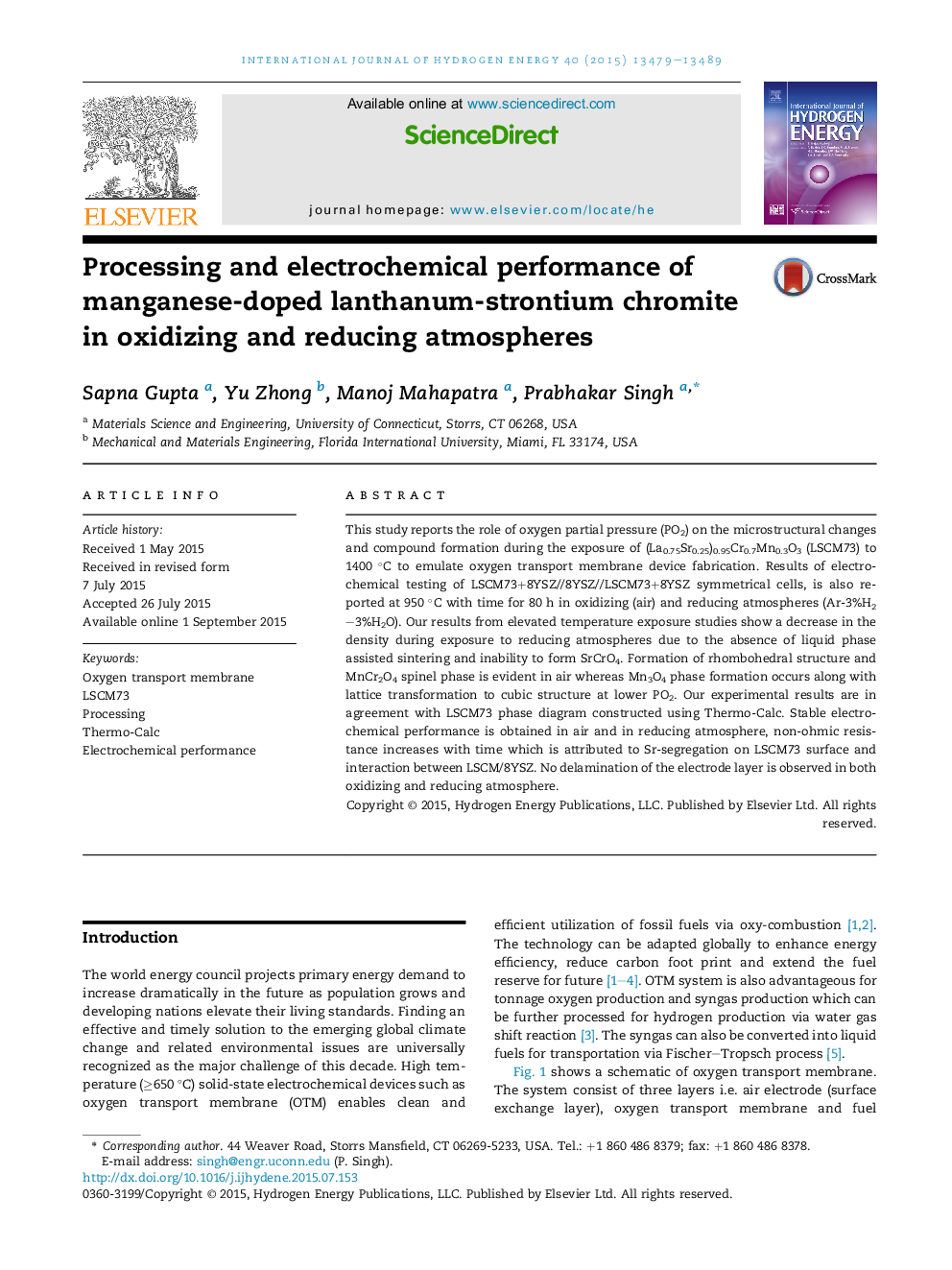| Article ID | Journal | Published Year | Pages | File Type |
|---|---|---|---|---|
| 1274640 | International Journal of Hydrogen Energy | 2015 | 11 Pages |
•Densification and compound formation in LSCM73 is examined as an f(x) of PO2.•Results are in agreement with the phase diagram constructed using Thermo-Calc.•Stable performance has been observed (up to 80 h) in air compared to Ar-3%H2–3%H2O.•Ridges and reaction lip formation are found at the LSCM/8YSZ interface.
This study reports the role of oxygen partial pressure (PO2) on the microstructural changes and compound formation during the exposure of (La0.75Sr0.25)0.95Cr0.7Mn0.3O3 (LSCM73) to 1400 °C to emulate oxygen transport membrane device fabrication. Results of electrochemical testing of LSCM73+8YSZ//8YSZ//LSCM73+8YSZ symmetrical cells, is also reported at 950 °C with time for 80 h in oxidizing (air) and reducing atmospheres (Ar-3%H2–3%H2O). Our results from elevated temperature exposure studies show a decrease in the density during exposure to reducing atmospheres due to the absence of liquid phase assisted sintering and inability to form SrCrO4. Formation of rhombohedral structure and MnCr2O4 spinel phase is evident in air whereas Mn3O4 phase formation occurs along with lattice transformation to cubic structure at lower PO2. Our experimental results are in agreement with LSCM73 phase diagram constructed using Thermo-Calc. Stable electrochemical performance is obtained in air and in reducing atmosphere, non-ohmic resistance increases with time which is attributed to Sr-segregation on LSCM73 surface and interaction between LSCM/8YSZ. No delamination of the electrode layer is observed in both oxidizing and reducing atmosphere.
